CTIA Fall 2007
Oct 24, 2007, 1:59 PM by Eric Lin and Eric M. Zeman
updated Oct 26, 2007, 2:45 PM
CTIA offered Phone Scoop the chance to get some hands-on time with a bunch of new phones. In Part 2, handsets from UT Starcom and i-Mate.
Part 1
LG Rumor
It's been quite a while since Sprint's had a true messaging phone - not a smartphone with a QWERTY keyboard - but a phone that's a solid choice for young, hip, text-addicts. The Rumor is can finally fill those long-empty shoes.
The Rumor is much slimmer than past generations of similar phones and has deeply curved edges which add up to a phone with barely any bulk - impressive considering it has a slide out QWERTY keyboard.
The screen is bright and usable, but its small size is a dead giveaway that this is not a high end phone. In fact, the Rumor doesn't even have EV-DO. The numeric keypad on the front has large keys and a good feel that makes it easy to navigate and pound out telephone numbers.
Slide the keyboard open and the Rumor sits comfortably in your hands. The keys feel great and the keyboard itself was one of the best feeling and easiest to use that we've tried in a long time. The only downside is that like the iPhone, there are no punctuation keys. You'll have to hit the alt key every time you want to type a comma or period (or anything else for that matter).
Other than the keyboard, the Rumor is an extremely basic phone. It has a web browser and a media player that can play files from a memory card, but no advanced multimedia or online features.
Here is a video preview tour of the Rumor:
Or visit YouTube for more viewing and sharing options.
BlackJack II
We had just a few moments to spend with the new BlackJack II from Samsung. Unfortunately the models available were both pre-production; we were told that hardware and/or software issues we might encounter with them should be resolved come the release date.
There are definite improvements in the hardware when comparing the BlackJack II to the original. First, it is slightly thinner, both across and in depth. Even though it is thinner, it has a deeper internal cavity for the battery, and offers a much better stock battery (1700 milliamps). It sits well in your hand and is comfortable to hold. It has good balance: not too wide nor too narrow. And because the battery is positioned in the bottom half of the phone, it is not top heavy. This means it is easy to grip for typing two handed, and it didn't cause hand fatigue.
Speaking of typing... the keyboard is better. The keys themselves are a bit rounder, and are not angled oddly as on the original. They also seemed to be a bit more like nubs, and less like dashes, and they stick up from the surface of the phone just a touch more. Using the keyboard was natural, though the action of the buttons on this pre-production model left something to be desired. Most of the keyboard provided good feedback, but the top central part of the keyboard, directly below the navigation cluster, was essentially dead. When you pressed them in, the entire keyboard sank in and there was no "click" at all. When attempting to type messages, those problem keys led us to make a number of mistakes, as we had to press the keys multiple times to get anything typed in. The Samsung rep we spoke to assured us that this would not be an issue with the production version.
The navigation cluster has also been updated, some of it good, some of it not so good. First, the d-pad has been made bigger. This is good news. It is also a scroll wheel, which lets you zoom around the menus of the BlackJack II quickly. The scroll wheel was responsive and moved the cursor or selector around the screen swiftly. Of course the d-pad also acts like a regular four-way d-pad if you want to just press it up, down, left or right to make your selections. Since the scroll wheel functionality was not consistently available in all modes of the phone, it actually becomes necessary to use the d-pad in some situations. The action of the d-pad was good, and because it is larger, it is easy to find and use.
We can't say the same for the navigation keys that surround the D-pad. On the original, these buttons were ever-so-slightly rounded, with small valleys along the seams of the keys. This contour made them easy to distinguish from one another. This is not the case with the BlackJack II. The buttons are all completely flat and smooth, and there is very little to help your thumb determine on which button it is actually resting. In fact, these keys don't even really feel like keys, with their mirrored finish and smooth contour. They are all about the same size and shape as on the original, though. So if you're upgrading from the first version of the BlackJack, perhaps this won't be an issue.
All of the hatches and buttons along the sides of the phone were easy to use. We didn't have any issues finding them, determining what they do, and using them. The volume toggle keys can be found quickly with your fingers, and have nice action to them when pressed.
As with the original, there is a slight bulge along the top of the phone where the camera is. It is no more pronounced than on the original, and doesn't affect the feel nor pocket-friendliness of the phone.
In using the Windows Mobile 6 interface, we didn't notice any issues with the speed of the phone. Applications and menus were snappy.
The unit we tried was burgundy in color; a black version will also be available. It has a slight texture to the paint job, and if you look at it closely, you can see that the paint looks (but isn't actually) cracked. The front has some silver and black styling on it.
So while there are definitely improvements over the original, we hope that the issues we experienced using the keyboard are resolved before the BlackJack II hits store shelves in the coming weeks.
Here is a video preview tour of the BlackJack II:
Or visit YouTube for more viewing and sharing options.
HTC 5800
The 5800 has already launched with Qwest, but it will soon be available through Verizon, and we finally got a chance to get our hands on a final build of the smartphone.
After playing with the LG Rumor the 5800 seems positively chunky. In fact, it is no larger than other sliding-keyboard smartphones from HTC, and about the same style. The front is packed with an average size QVGA screen and the large slew of keys required for Windows Mobile Standard (Smartphone). If you don't look at the screen, the numeric keys feel slightly mushy, but don't seem too bad. That is, until you glance down and realize that you have not been typing accurately at all. It's easy to hit way more numbers than you think because of the mushy keypad.
Sliding the 5800 reveals a QWERTY keypad with 2 soft keys embedded in it. Although the keys feel stiff, and don't give off much indication that you've hit them, we were able to type fairly accurately with this keyboard. In fact we were more accurate with the 5800 than on any similar HTC model. Not even the 2 soft keys got in the way to reduce our accuracy.
The Windows Mobile experience is well documented by now, and we were not given any indications that the 5800 would be any different from the norm - not even with an upgrade like the Q9m's new home screen.
Here is a short video preview of the HTC 5800:
Or visit YouTube for more viewing and sharing options.
LG CU515
The CU515 is only an upgrade in style from the CU 500v. It is now sleek and shiny and a giant fingerprint magnet, like most other phones on store shelves these days. In fact if anything some users might call it a slight downgrade because the external display is now monochrome instead of color. However it is highly legible and integrates much better into the look of the phone. (Although it doesn't compare to the Motorola U9, which has the best-integrated external screen we've seen recently.) The camera is also now fixed on the outside front of the phone, so you can no longer rotate it towards you to take self-portraits or share video of yourself.
The one place the CU515 has clearly been upgraded is with a new keypad. The keys are large and easy to type on. The model we were able to photograph and try was not working, so we could not tell if there are any upgrades to the menus and navigation.
RAZR2 Luxury
We spent just a few minutes looking at the Motorola RAZR2 V8 Luxury Edition.
It has refined materials, including real gold (not fake!) plating. The gold is ultra shiny, and ultra smudgable. The gold highlights are visible in a pin-striped pattern on the front fascia of the phone, as the entire keyboard and sides of the phone are plated in gold as well. It is really dazzling when held directly under light. We can imagine it blinding people if used in sunlight.
The back of the phone is covered in a snake-skin-patterned rubber-like substance that offers plenty of grip when holding the phone. We have to say that this material feels more like rubber than snake skin. That's a bit disappointing since it contrasts starkly with the high-fashion gold plating.
Overall, though, the hardware and user interface are similar to the original RAZR2 V8.
We also shot a quick video tour. You can watch it here:
Or visit YouTube for more viewing and sharing options.
Part 2
UTStarcom Coupe
The UTStarcom Coupe is an entry-level phone that is designed for older users who may have trouble operating the hardware on regular mobile phones.
It is a very simple clamshell with a pared down feature set, leaving only the most basic functionality intact. None of the units we saw were activated, so not all the features were available to check out.
It uses tough plastics that are smooth to grip. The volume key on the left is a very large key that is easy to find. It sticks out quite a bit from the side of the phone. It is also colored white and stands out visually from the black casing of the phone itself. These two characteristics made it very easy to find and use. It also had good feedback.
The voice-activated dialing button on the right side of the phone was less easy to use, as even the UT Starcom staff would often press the large volume keys on the left while trying to press the small, awkwardly placed voice dialing key.
It does have dual display so calling and status information is visible with the phone closed. The exterior display is monochrome and uses larger fonts so that they are easier to read.
Opening the phone up, you are greeted with a large and easy-to-use numeric keypad. It has nice, soft keys that are well contoured and feel good under your fingers.
Just under the display are three buttons, labeled “I”, “C”, and “E”, or In Case of Emergency. Each of these is essentially a speed dial key to someone who should be notified in the event of an emergency. This is a good idea, and at a high level makes sense, but the execution here is a bit shy of good. First, the buttons don't really have any labels letting you know what contact they are linked to. If this phone's user were to be injured, a strange who might pick up the phone and dial one of those three keys would really have no idea who it is that they are calling. Not only that, but the buttons are located directly under the left and right menu shortcuts. This leads to confusion, as your thumb naturally wants to push the button closest to the shortcut. The actual buttons that control the shortcuts are located below, in the navigation cluster.
There is also a dedicated speakerphone button and a 911 button on the keypad. The 911 button is a decent idea, but we fear accidental calls may be placed to emergency services because it is not that far from the end key or other keys. One mis-press, and you might have a cop coming over to your house for dinner.
The menus are also very basic and can be customized very little. It is designed in such a way that older users will be able to use it right out of the box and not have to make too many adjustments or modifications to get it to act the way they want.
Despite UT Starcom's best efforts, the Coupe is loaded with confusing buttons and probably not nearly as easy for the aging population to use as they had hoped. You can see the features and the pitfalls in this short video tour of the Coupe. You can watch it here:
Or visit YouTube for more viewing and sharing options.
More UT Starcom
UT Starcom also showed a few of the phones they've recently released with some of the prepaid carriers. Including the Virgin Mobile Super Slice. It's not terribly obvious what makes this so "super" since there are no obvious upgrades other than the larger screen. However the keypad is no longer the SLVR wannabe that the Slice had, and it is much nicer to use.
The Cricket Mini was not working for us, but it is a tiny little phone that reminds us of another Motorola - the U9. (Only it's much, much smaller. did we mention it's tiny?) The navigation keys are rather odd - the up and down keys are huge while the left and right keys are tiny little slivers sandwiched between the other navigation keys. You might miss them and think the phone only has scroll keys.
UT Starcom also showed off a new clamshell that has the most unique design we've seen from the company since, well, we can remember. It has an organic high tech design like something out of a sci-fi movie and a hinge that creates this smooth curve like some sort of high tech boomerang when it is opened.
The 8075 comes in two flavors. The black one works on CDMA 850 / 1900 networks while the white 8076 adds 1700 MHz for carriers like Metro PCS and Cricket who both won big in the AWS auction last year. So far there were no working models, so the specs might change, but like most UT Starcom models, it is an entry level phone with Bluetooth, a VGA camera and a monochrome external display.
i-Mate 8502/9502
We were able to spend some time with the new Ultimate series of Windows Mobile smartphones from i-Mate. The 8502 and 9502 share most features, such as the processor, HSDPA data and so on. There are also many differences hiding under the covers as well. All the i-Mates we played with were preproduction. We were told that while the shape and configuration of the buttons and hardware will not change, their feel will likely be improved by the time final models are available for sale.
8502
The 8502 is a standard-looking bar-style smartphone, with screen and full QWERTY keyboard below. It is fairly thick and heavy, and feels more robust than your typical smartphone. Though it is thicker than most bar-style smartphones, it still feels thicker than it actually is because of it's right angle design. It is like holding a brick in your hand. There is more metal in the design, and less plastic, adding to the bulk.
The screen is generous in size, but the phone is top heavy, creating difficulties when typing two-handed. This is exacerbated by the fact that the keyboard is very much squished down at the bottom of the phone. This creates a nasty cramping sensation in your hands after a few moments of typing out messages.
On top of that, the keyboard offered very little feedback. The keys were mushy and it was difficult to discern when you had pressed most of the keyboard buttons. We were told that this would likely be improved by the time production units are ready. But that will not fix how narrow the keys are. They are about half a centimeter (maybe a quarter inch) wide and stacked right next to each other with no space between. It was very hard to type with.
The mushy key syndrome is carried over to the function and menu keys above the QWERTY keyboard, as well. They simply didn't have any feedback, or offer any sort of “click” to let you know that the buttons had been pushed.
There are three ways to navigate with the 8502 (and 9502). You can use a BlackBerry-esque jog dial on the left side of the phone, a tiny little joystick on the front of the phone, or a combination of the stylus and your finger on the screen itself. The jog dial was very tiny, and felt cheap to us.
No matter which way you chose to navigate, there was a lot of lag between performing actions on the phone and having anything actually take place. Everything about using these phones was slow and buggy, which we are hoping is due to the fact that they are preproduction models.
9502
The 9502 offers more in terms of features over the 8502, but the price you pay for that is weight. It is one heavy phone. The word brick comes to mind, especially given its less-than-dainty girth. It is also made of metals, and this likely contributes to the weight.
Many of the control buttons on the 9502 offered similar feedback issues as the 8502. But it adds a number of buttons, including dedicated email and Internet keys, that make jumping directly into some programs or applications a little bit faster.
It has a 3 megapixel camera (compared to the 8502's 2 megapixel camera) and also includes a user-facing VGA camera for video calling capabilities. The biggest different is that it has a slide up keyboard. In fact, the 9502 very much resembles the Motorola Sidekick Slide. It is just a heavier, clunkier version that offers a more enterprise-focused feature set.
Because of the size and shape of the 9502, we expected the keyboard to be much like the one found on Sidekicks. Instead what we found was a small, cramped keyboard. The keys on the 9502 are wider than the 8502, and feel similar to those found on HTC devices, but were also plagued by feedback issues. The keyboard is also crammed into the cavity created by the sliding screen. Because it is buried deep between the ridges of the phone, getting your thumbs in to hit the keys along the outside of the keyboard (i.e., the Q, A, Z, or P, L, M) is a chore and led to thumb cramps.
Neither of these phones is aimed at consumer users. They are hearty enterprise-class smartphones that will likely find an audience with field force personnel who need more rugged equipment.
Lack of refinement aside, they do offer a lot of standard features and should be powerful mobile computing platforms when ready for sale.
We took a short video comparison of both phones. You can watch it here:
Or visit YouTube for more viewing and sharing options.
i-Mate 6150/8150
These two smartphones are nearly identical. The only real difference is that the 8150 offers a 12-key numeric keypad for better text and data input, while the 6150 relies on screen-based input only. To fit in that extra keypad, the screen is also slightly reduced in size. Overall, though, that is all that sets them apart.
Both have the same jog dials located on the left sides of the phone as the 8502/9502, and similar button placement/configuration. These phones are made of solid metals and plastics, and are equally as heavy as the others, as well.
Using these phones, the 6150 was very buggy. The keys barely worked, and the processing power was very slow. There was a long, long wait between pressing buttons and having the phone respond in any way to let you know you had touched it. This was surprising since these phones are due out within a few weeks, but the models we were using still may have been early hardware.
The 8150 was better, and the numeric keypad offered more feedback than the 6150 and was easy enough to use. While it still left us wanting for a more definite “click”, you could at least tell that you had touched its buttons.
The joysticks used for navigating felt strong and worked well. There was very little stickiness and we didn't have any problems using them.
Both offered XGA output ports, and could be used with full-sized displays for a more desktop-like experience.
We have a short video preview tour of the 6150 and 8150. You can watch it here:
Or visit YouTube for more viewing and sharing options.
We also have a demo of the XGA video out from these devices. You can watch it here:
Or visit YouTube for more viewing and sharing options.
Comments
Voyager at CTIA
People are wanting to know some specs of the phone, such as H, W, D, weight, battery mAh, display size, etc.
Weight:4.69oz
Standard mAH:950 mAH
Extended mAH:1,500 mAH
Display Size: 2.81" External Display and Internal Display size
Sprint LG Rumor
linux phone?
Which Carrier?
Thanks, Berry Frankin Craig IV 🙂
berrycraig said:
Does anyone know if this phone ...
Which one? 😕
CTIA came late this year
All of these phones suck...
Yuck. When are we going to see a real technology advancement?
🙄
maybe next year
i would love to see some hones that are distinguished from the pack, phones that have innovative and worthwhile features.


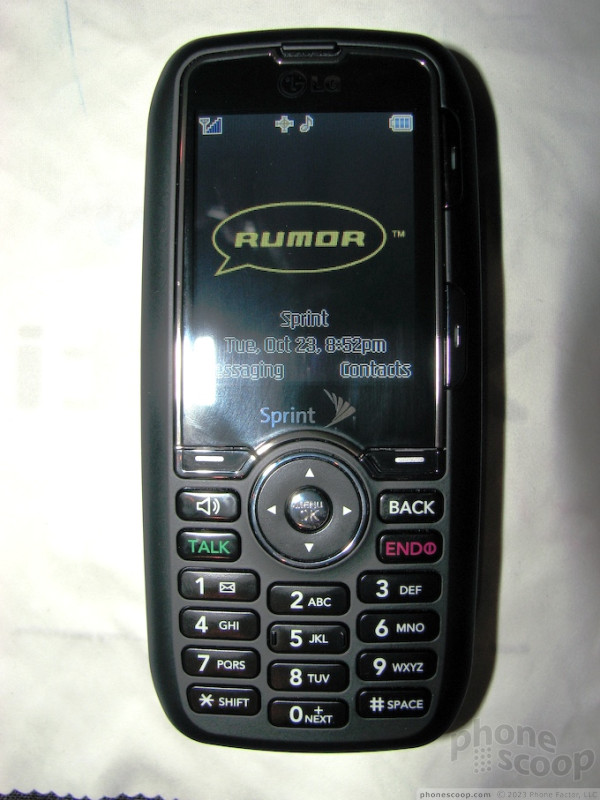




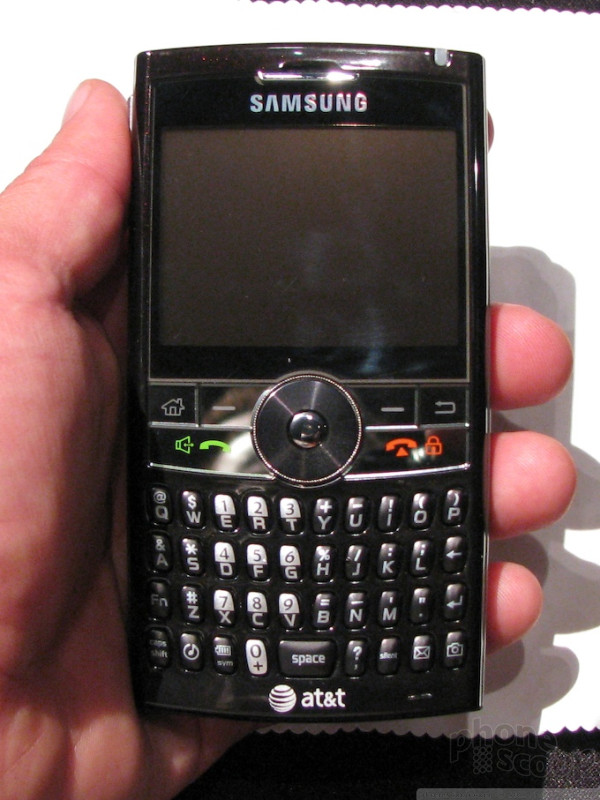
















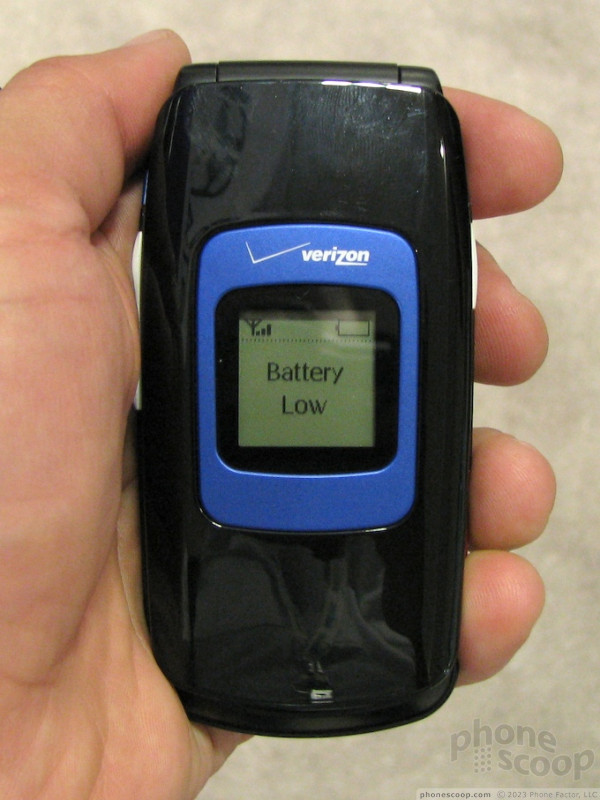



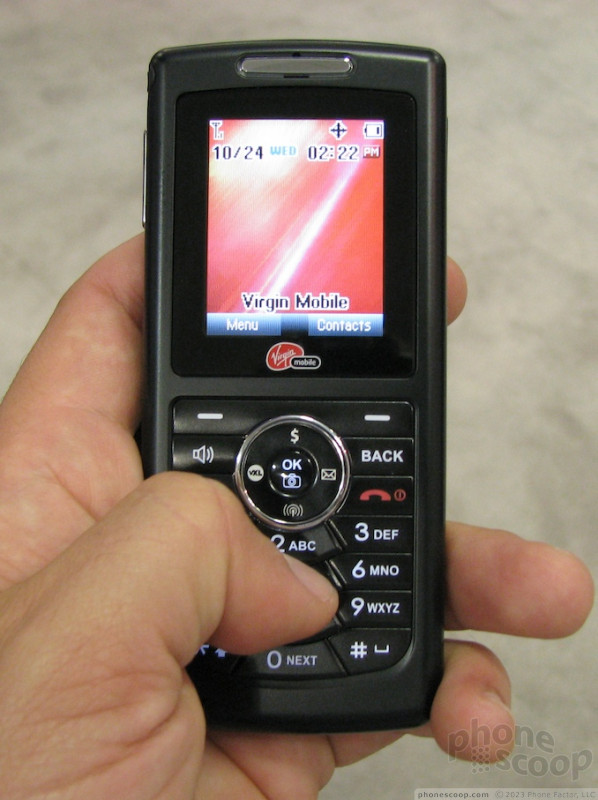


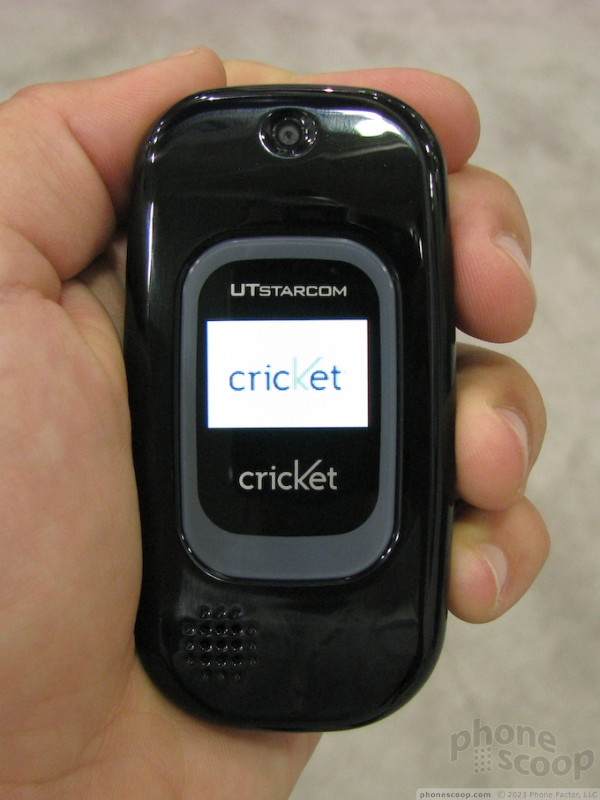




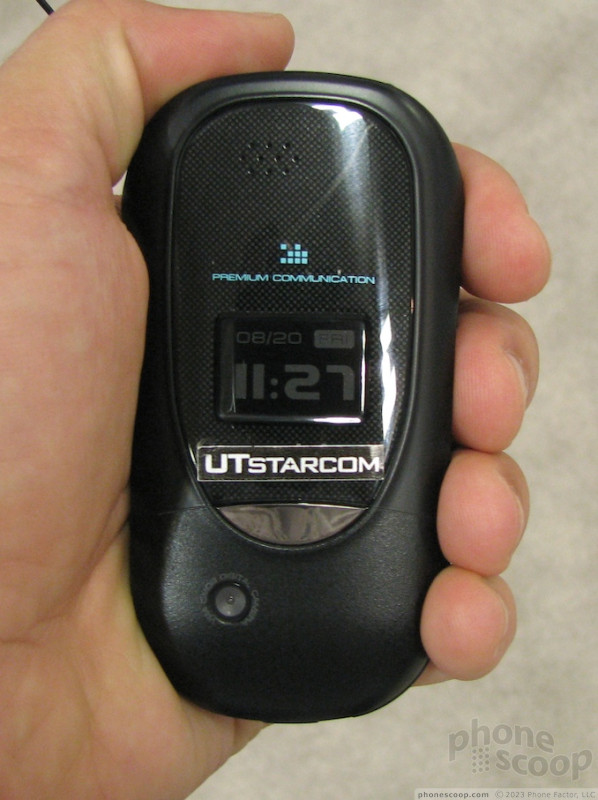





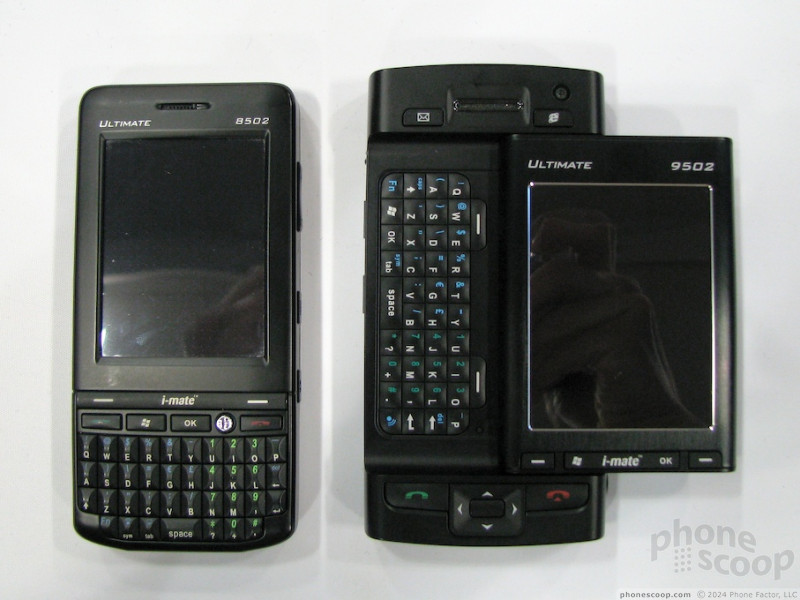





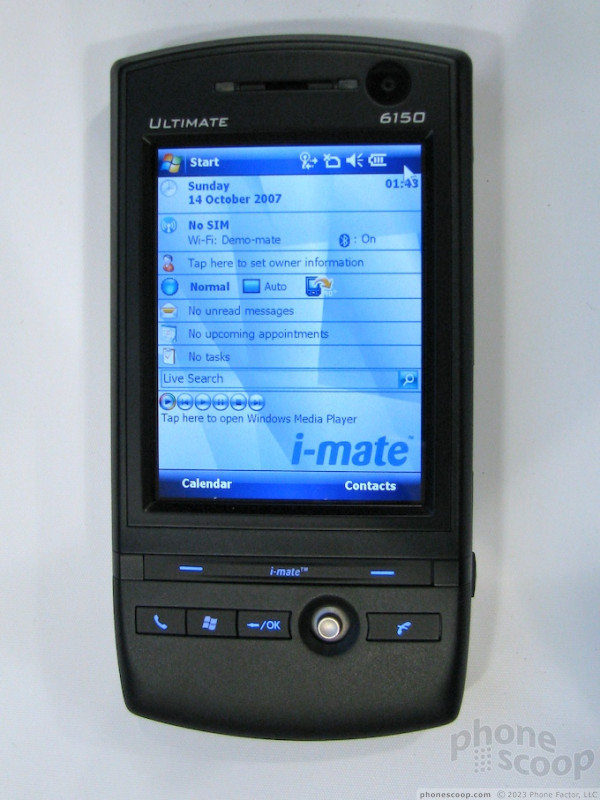






 Review: LG Rumor
Review: LG Rumor
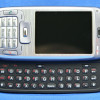 Review: HTC SMT-5800
Review: HTC SMT-5800
 Video Review: Samsung BlackJack II
Video Review: Samsung BlackJack II
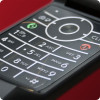 CTIA 2007
CTIA 2007
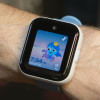 Hands On with the T-Mobile SyncUp Kids Watch
Hands On with the T-Mobile SyncUp Kids Watch
 HTC 5800 / Fusion / S720
HTC 5800 / Fusion / S720
 UTStarcom Mini 8935
UTStarcom Mini 8935
 UTStarcom Super Slice / CDM-1450
UTStarcom Super Slice / CDM-1450

